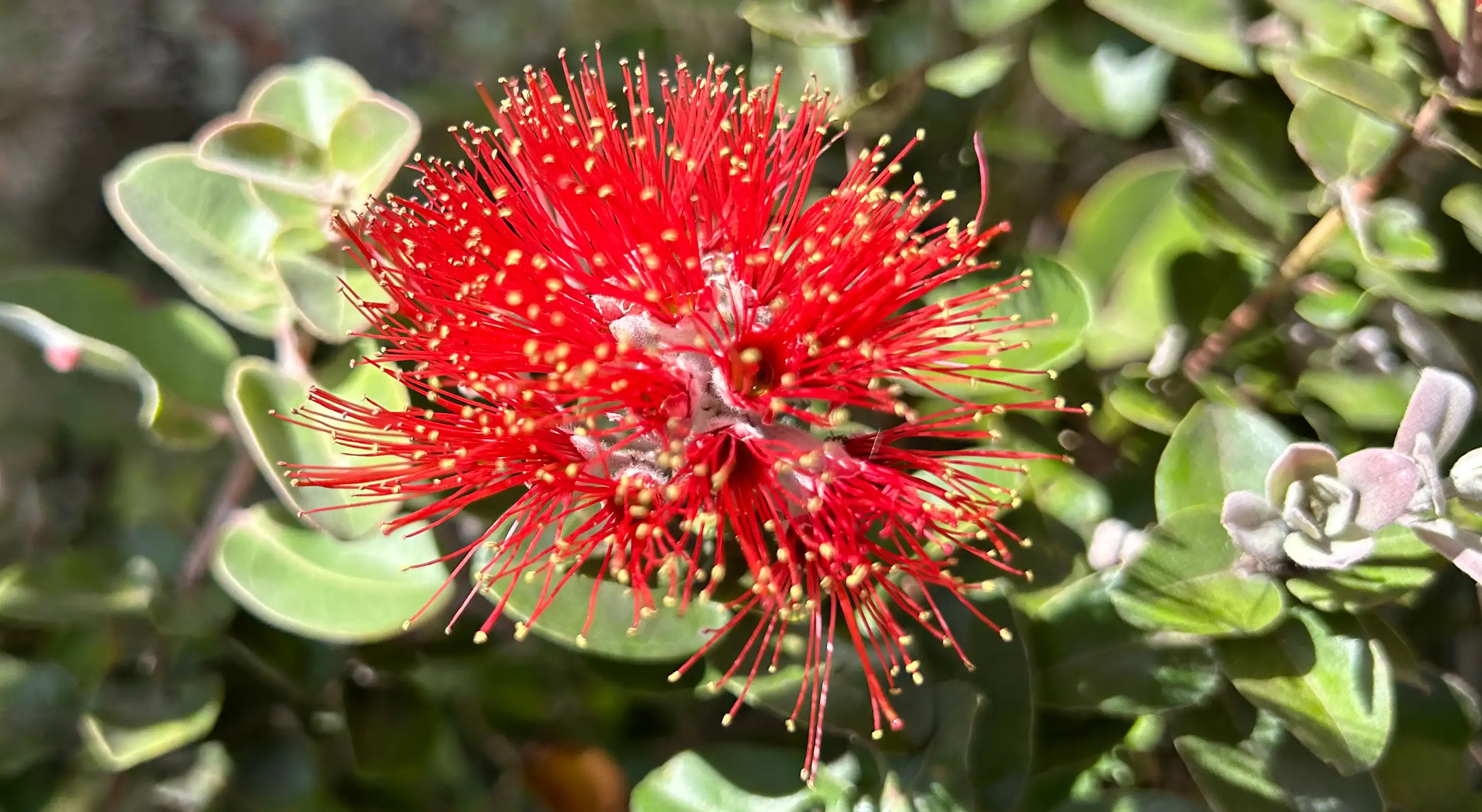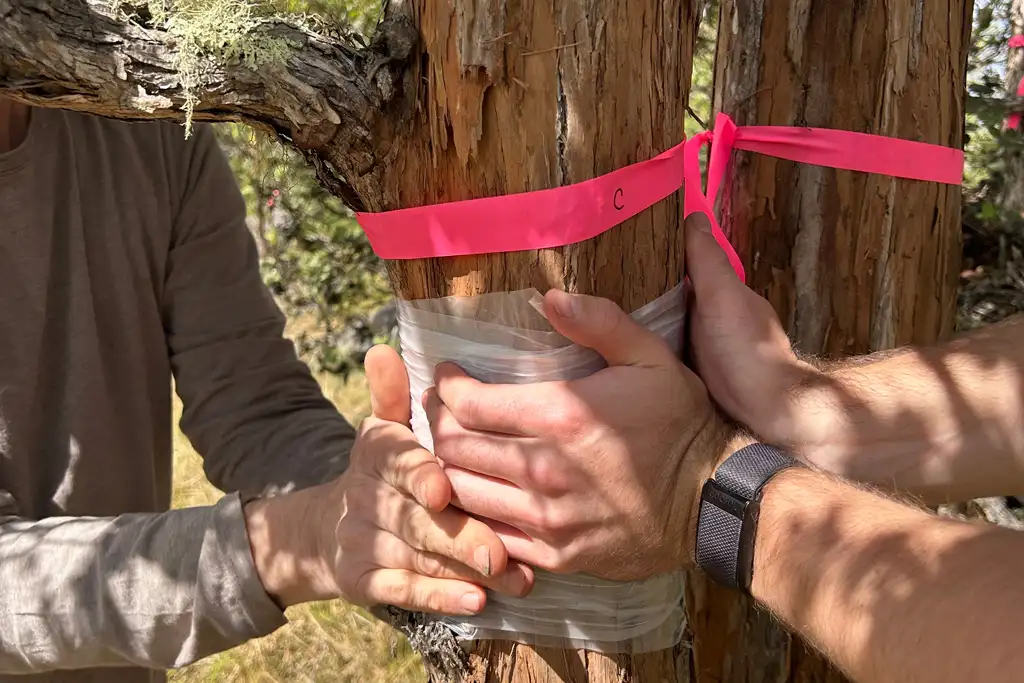Background / justification
Invasive pathogens are an increasing threat to forests worldwide, reducing forest productivity and causing extensive tree mortality. To better predict pathogen establishment, spread, and disease impacts on ecosystem function, fundamental knowledge of host tree physiology and the subsequent pathogen-induced stress response are critical. Nonstructural carbohydrates (NSC, i.e., sugars and starch) are central to tree function and support critical metabolic processes, making them essential to survival. Further, they provide the energy and substrate to fuel secondary metabolic pathways, the products of which play important roles in defending against destructive pathogens. Despite the potential for the relationship between NSC storage and defense investment to modulate tree resistance, the linked dynamics in the presence and absence of pathogen challenge remain relatively unexplored. In Hawaiian forests, a novel destructive fungal pathogen, Rapid ʻŌhiʻa Death (ROD; Ceratocystis spp.), threatens the keystone tree species Metrosideros polymorpha Gaud. (‘ōhi‘a lehua). To protect these native forests, there is an urgent need to identify resistant phenotypes and the mechanisms responsible for enhanced survival. Our highly collaborative project is designed to merge basic and applied science to help meet that need. We integrate two different aspects of a plant’s biotic stress response that have often been historically examined in isolation—NSCs and the pathogen-induced physical and chemical response—to develop a potentially new metric to identify howa tree’s C reserves may buffer against biotic stress.
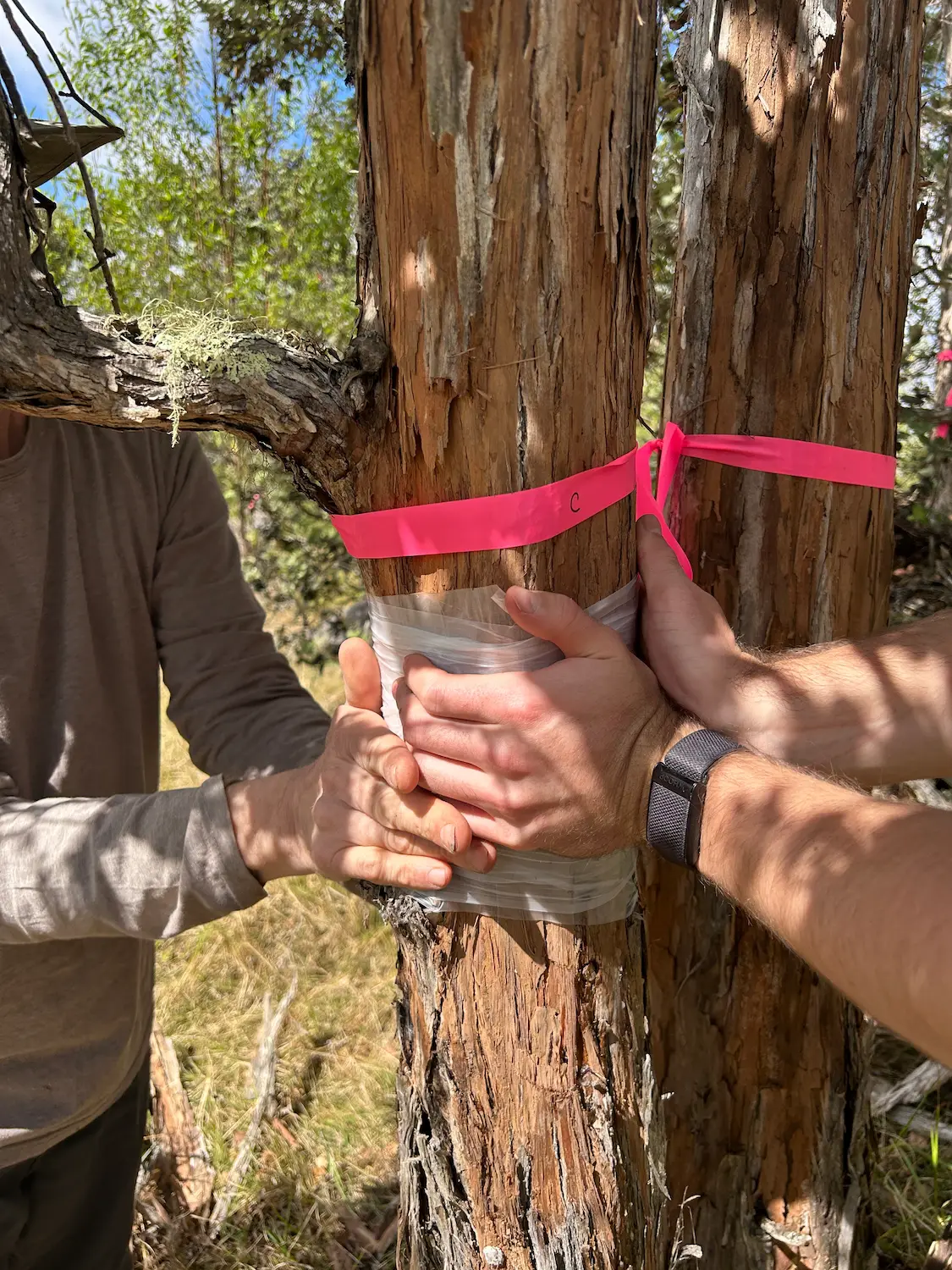
Project objectives
- We are coupling field and greenhouse-based experiments to quantify the relationship between local NSCs and the physical and chemical defense response to ROD infection to improve our mechanistic insights into resistance as well as our ability to predict ʻōhiʻa survival at the individual and population-level.
- In project 1, we seek to identify the natural seasonal minima and maxima of both NSC reserves and defensive chemistry across tree organs.
- In project 2, we will simulate pathogen infection in mature ōhi'a trees using methyl jasmonate to determine the induced defense response and its role in providing resistance to ROD infection.
- In project 3, we will conduct a greenhouse experiment to assess genotype × environment effects on NSC-defense responses to ROD.
Approach
- For project 1, we conducted an observational field-based study in 2024 by repeatedly sampling healthy ʻōhi’a trees for NSCs and secondary metabolites on a bi-monthly basis. We collected leaves, branches, stem xylem, stem phloem, and roots from each tree (n=9) for NSC and untargeted metabolomics. We also monitored individual tree phenology via trail cameras and quantified stem growth using single point dendrometers, which will also be used to interpret C dynamics in the context of phenological events like flowering and xylogenesis.
- For project 2, we performed a pilot study in February 2025 to determine the dosage and duration of methyl jasmonate application required to elicit an initial chemical and structural defense response.
- For project 3, we have obtained susceptible and resistant commercial varieties of ʻōhi’a saplings and are waiting for them to grow to proper size for experimentation.
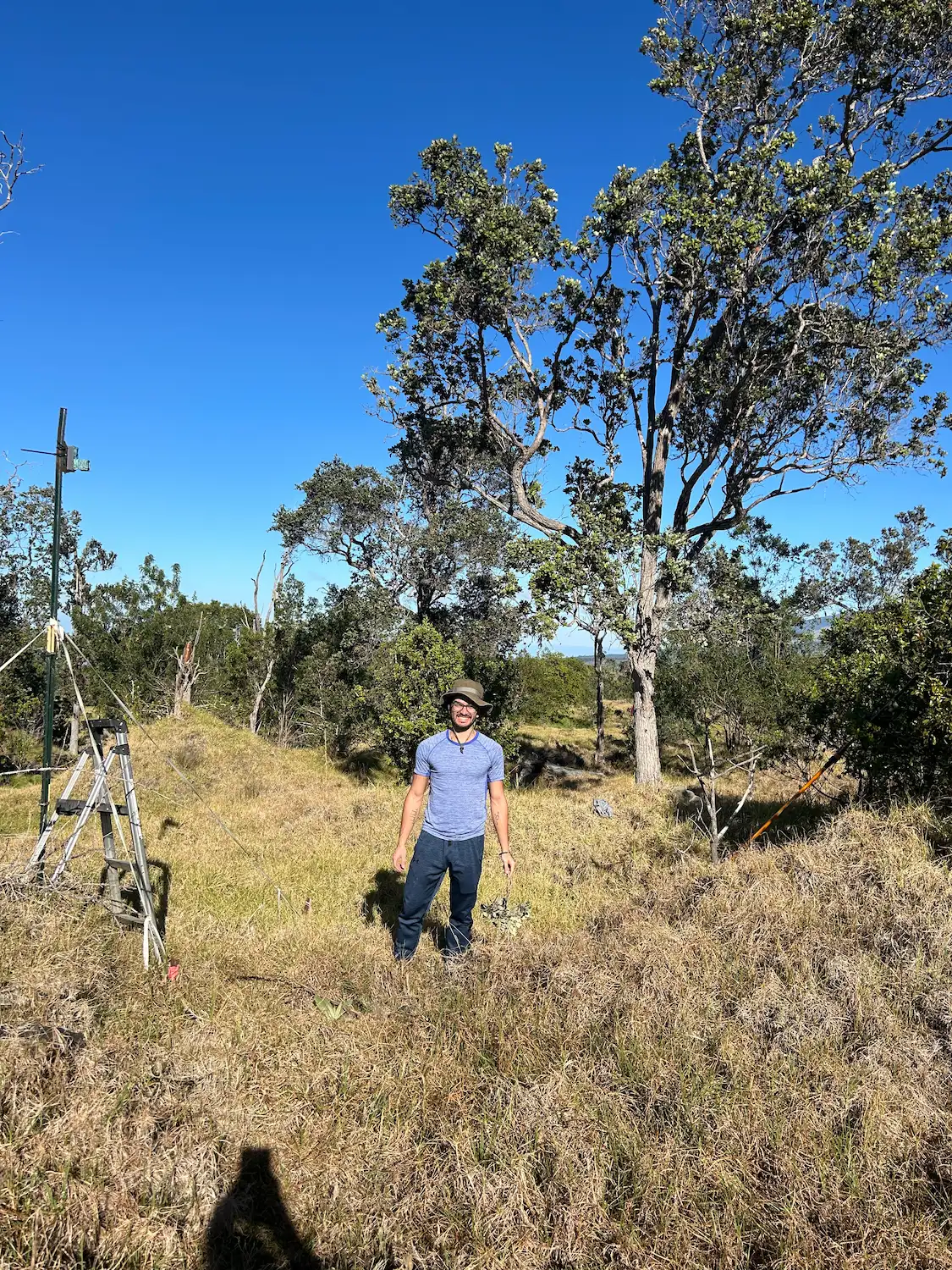
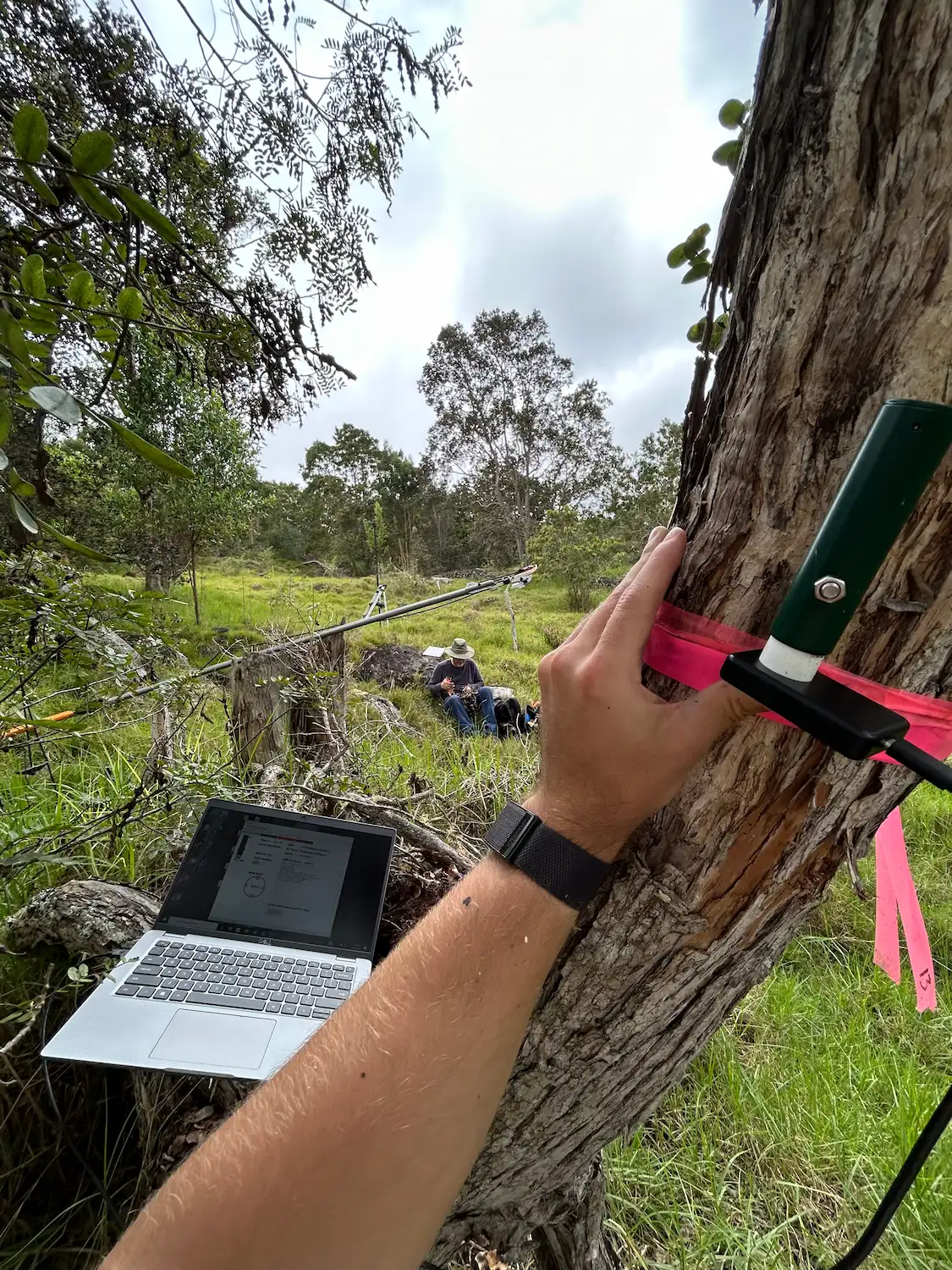
Key findings / accomplishments
- Field collection for project 1 was completed in February 2025.
- To assess the secondary metabolite composition of mature ʻōhi’a trees, we analyzed phloem, xylem, and foliar tissue from mature and young leaves by 1H-NMR spectroscopy. Interestingly, phloem spectra from foliar tissue displayed a more complex mixture of phenols and aromatic compounds, and while xylem and phloem extracts had very similar spectral profiles, the latter contained peaks characteristic of carbohydrates in higher abundance.
- Compositional differences in constitutive secondary metabolism can explain variation in induced defenses, and may even serve as an important variable in distinguishing pathogen resistant-trees. Preliminary 1H-NMR analysis of foliar samples revealed intraspecific variation in the chemical profiles of both mature and young leaves. Those differences were more prominent in the spectral region containing aromatic molecules, which is affiliated with bioactive compounds, such as phenolics. Moreover, qualitative analysis of the spectra suggests that young leaves have a higher diversity of phenolics compounds, while mature leaves have higher sugar content. Further work using this analytical framework will elucidate how this phytochemical variation is expressed across different tissues and time.
Future plans
- For project 1, tissue samples collected throughout 2024 will be analyzed for NSCs and chemical defenses, and flowering times will be quantified from images collected by the trail cameras. This will allow interpretation of C dynamics in the context of phenological events.
- For project 2, we will use the preliminary data from the pilot study to conduct a field-based experiment in which methyl jasmonate will be applied to mature ʻōhi’a trees and the physical (i.e., tylose formation) and chemical defense response will be quantified over time.
Partners / stakeholders / collaborators
- Hāloa ʻĀina
- Tawn Speetjens, Douglass Jacobs (Purdue University)
- Christian Giardina, Marc Hughes (Institute of Pacific Islands Forestry, USDA Forest Service)

